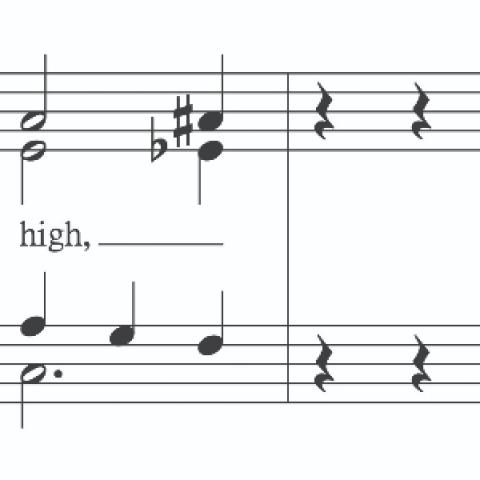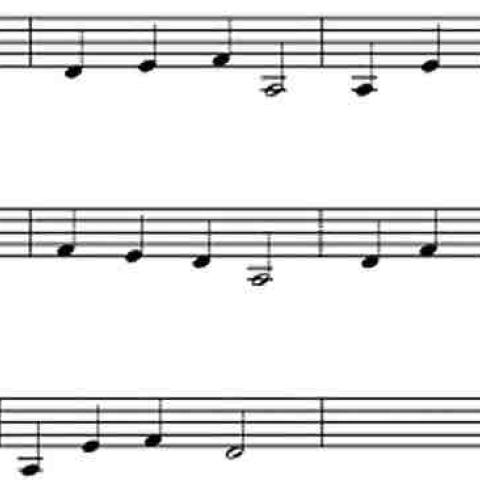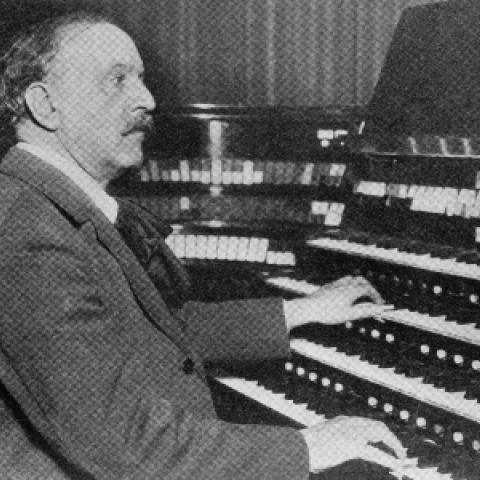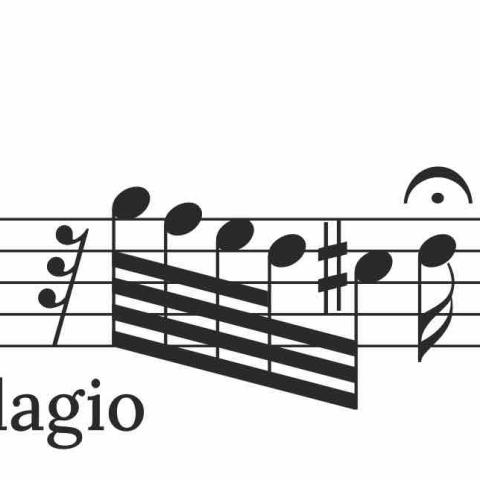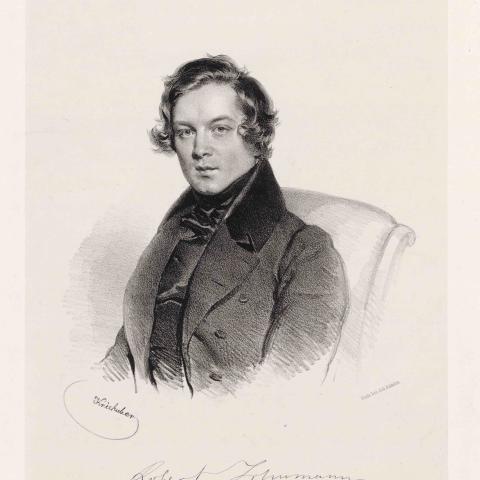Thomas L. Read, composer and violinist, is Professor Emeritus at the University of Vermont. He holds degrees from the Oberlin, New England, and Peabody conservatories. As violinist he has been a member of the Erie Philharmonic, Baltimore Symphony, Boston Festival Arts, Vermont Symphony, and the Saratoga Festival of Baroque Music. During his more than forty years at the University of Vermont he taught music theory and composition, conducted orchestra concerts and musical theater productions, and led an innovative series of new music concerts and lectures (Symposium on Contemporary Music, held annually from 1968 until 1991).
His compositions project a consistent and distinctive personal style while embracing a variety of New Music idioms and techniques. Critics, while noting its lyrical qualities, have called his music “substantive and meticulously planned, with a wide expressive range leaving a feeling of rich satisfaction.” His Toccata and Five Preludes for organ were published recently by The American Composers Edition. C. F. Peters, Tunbridge Music, and Tuba Euphonium Press also publish his work. Listen to his music on Navona Records, ACA Recordings, Zimbel Records, VCME Records, Socialband.org, and on YouTube. A complete repertoire and recording catalogue is at thomaslread.com.

The ability to move from one key to another smoothly and convincingly is one of the church organist’s highly valued skills. Facility in modulation is especially useful when leading the singing of hymns. Moving a particular verse to a higher key can allow the congregation to “catch its breath” as the modulation unfolds and may encourage more energetic singing at the onset of the next verse.1
A change of key can be made directly and dramatically as shown in Example 1, but an extended musical journey from one tonal region to another may charm, even inspire the listener. Herein we present a diverse collection of modulating phrases. As well, a technical review is offered for those who want to compose their own modulations applicable to specific hymns. Examples 1 through 10 accompany the review and are more intentionally didactic than the Additional Models, numbered 1 through 15 (see page 14). The latter collection includes modulations in both major and minor keys and in duple and triple meters. A few are applicable to hymns with modal and “Early American” qualities. Numbers 1, 13, 14, and 15 incorporate melodic elements of specific hymns. The models all move to a key that is a step above or below the initial key, reflecting typical demands of hymn accompaniment. In every case it is assumed that the initial key has been firmly established before the commencement of the modulation.
Here are some guidelines for composing modulations. Bear in mind, modulation by half-step in major mode (e.g., C to D-flat) is challenging as there are no chords common to both keys. Lacking common diatonic chords one must accept varying degrees of chromaticism. When modulating by whole step in minor mode (e.g., C minor to D minor) common chords are available only with harmonic and melodic minor scale forms.
• Unless the replication of a hymn’s melodic material is a foremost concern, it is helpful first to sketch out a fundamental progression, working upward from the bass voice. Examples 3, 3c, and the “first stage” of Example 4 demonstrate this approach. In Example 2 a basic counterpoint between bass and soprano is proposed. In Example 3c chromatic chords leading from C minor to D minor are linked together in accordance with what Anton Bruckner called “the law of the shortest way.” That is, to the extent possible the voices move by step. This voice leading principle promotes coherent, easily singable lines.
• When planning extended modulations it is worthwhile to dissolve or weaken the energy of the initial key before beginning to establish the new key. As shown in Examples 5c and 6a, this strategy can also strengthen the effect of shorter modulations. In Example 5c the mediant chord (on 3rd scale degree) of the new key (C) is tonicized before cadential motion in the new key is introduced. In Example 6a the diminished chord that embellishes the subdominant of the new key is chromatic in both keys. Example 4 includes three preliminary stages of composition that culminate in an extended modulation from D major to E-flat major. Despite the fact that the two keys are only a half-step apart, the harmonic and melodic sequential motion of the example’s final version, stage 4, produces a smooth, almost imperceptible dissolution of the initial key while sustaining a feeling of moving upward to the new key. In stage 1 the F-major chord prepares the dominant (V) chord of the new key. Stage 2 achieves a smoother progression from D to E-flat by introducing a C-major chord to function as dominant of the F chord, now spelled as a minor triad diatonic in E-flat. Further, the G-major chord, measure 2, serves as applied dominant of C and as the subdominant (IV) of D major.
Thus, the whole affair moves through a circle of fifths arriving forcefully in the new key: D–G–C–F–B-flat–E-flat. Stage 3, the result of much experimentation and revision, unfolds two contrapuntally and motivically cohesive voices. Notice that sequential repetition in measures 3 and 4 of the opening motive also prolongs the effect of the G-major chord: a harmonic plateau on IV of D; an unessential but interesting musical bonus. Inner voices were added in stage 4, attending to the law of the shortest way and to traditional precepts of chord voicing. In other words, double chord roots; with inverted chords double the “tonal” scale degrees—1, 4, 5. Do not double active tones, that is, leading tones and dissonant tones.
• To lessen the possibility of the cadence in the new key sounding instead like a half-cadence in a different key, it is helpful to precede the new dominant chord with its own (applied) dominant seventh or diminished seventh chord, as in Examples 5a, 5b, and 5c.
• A sense of arrival is strengthened when the goal cadence is decorated with 7–6 or 4–3 contrapuntal activity, as in Examples 6a and 6b.
• Applied (secondary) dominant and diminished-seventh chords are ready means for dissolving and establishing keys, as are such chromatic chords as the Neapolitan Sixth (flat-II6) and the various Augmented Sixth chords, as in Examples 7a through 7e. As demonstrated in Example 7b, using a German augmented-sixth chord is one of the quickest and simplest ways of moving to a key a half-step above in either major or minor keys. In Example 7c the second beat is a dominant-seventh chord in F-sharp minor. On the third beat of the bar the E-sharp is respelled as F to form the fifth above the root of a diminished-seventh chord of the dominant in F minor. And, nota bene, there are four different potential leading tones in any diminished-seventh chord, as in Example 8.
• The modulation shown in Example 9 is perhaps impractically extended. But it offers a study exploring the modulatory potential of common tone relations among keys. A short common tone modulation is shown in Example 10.
• As ever, traditional principles of voice leading provide a sound basis for imaginative harmonic invention. To the extent necessary, review and practice of venerable part writing techniques can promote flexibility and freedom when composing harmonic elaborations such those shown in Example 3b and Model 15 (see page 14).
Notes
1. Daniel Krymkowski, Professor of Sociology at the University of Vermont and organist at First Presbyterian Church in Barre, Vermont, suggested to me that a varied collection of modulations would be useful as models when performing interludes between hymn verses. I take this opportunity to thank Dan for his advice and encouragement, and for contributing one of his own modulations.

